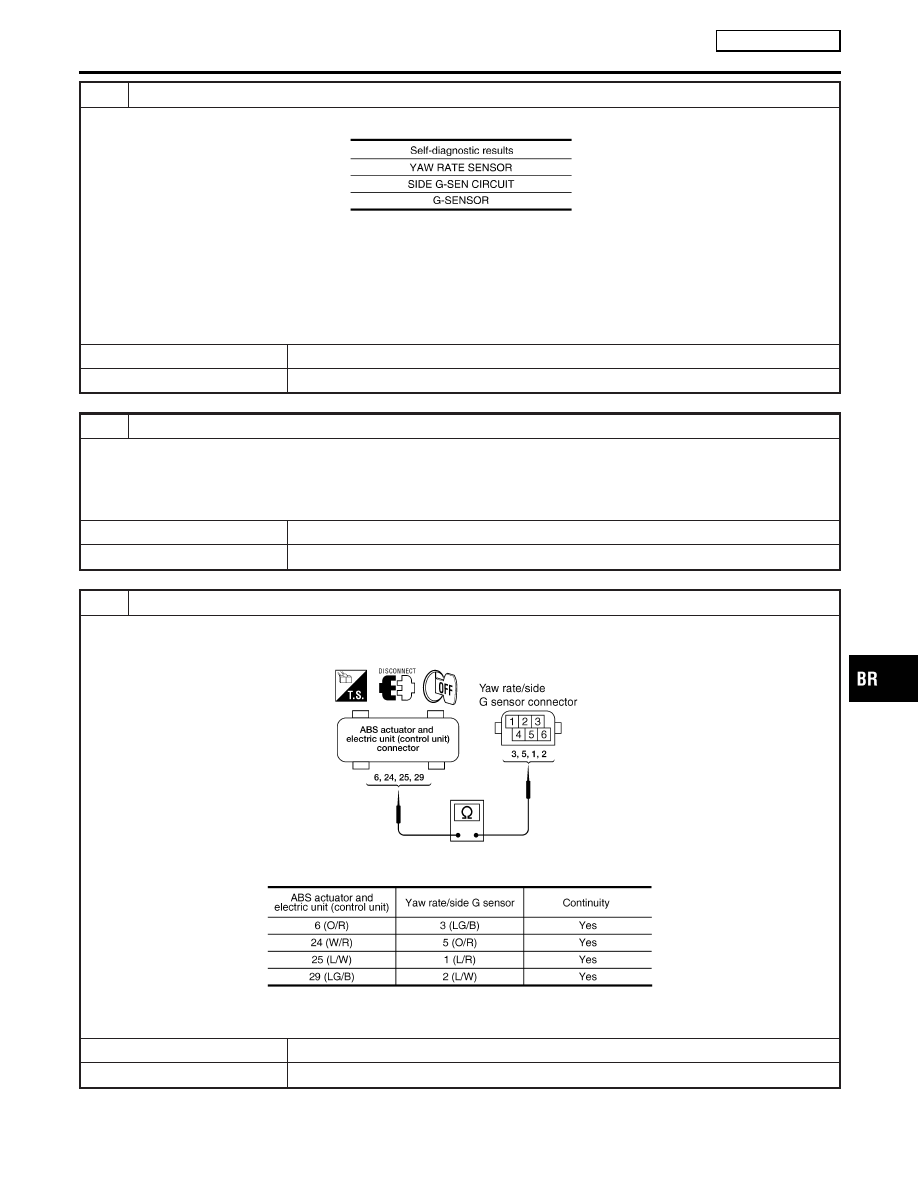Almera Tino V10 (2003 year). Manual - part 53

1
CHECK SELF-DIAGNOSTIC RESULTS
Check self-diagnostic results.
MTBL1613
CAUTION:
When on a turntable, such as at a parking structure entrance, or when on a moving object with engine running,
the ESP OFF indicator lamp might turn on and self-diagnosis using the CONSULT-II yaw rate sensor system mal-
function might be displayed, but in this case there is no problem with yaw rate/side G sensor system. As soon as
the vehicle leaves the turntable or moving object, restart engine to return the system to normal.
Is above displayed in self-diagnosis display items?
Yes
©
GO TO 2.
No
©
INSPECTION END
2
CHECK CONNECTOR
1. Disconnect yaw rate/side G sensor connector B66 and ABS actuator and electric unit (control unit) connector E143 and
check terminals for deformation, disconnection, looseness, and so on. If there is an error, repair or replace terminal.
2. Reconnect connectors and perform an ABS actuator and electric unit (control unit) self-diagnosis again.
OK or NG
OK
©
Connector terminal contact is loose, damaged, open or shorted.
NG
©
GO TO 3.
3
CHECK YAW RATE SENSOR/SIDE G SENSOR HARNESS
1. Turn ignition switch OFF and disconnect yaw rate/side G sensor connector B66 and ABS actuator and electric unit
(control unit) connector E143.
PFIA0460E
2. Check continuity between ABS actuator and electric unit (control unit) connector and yaw rate/side G sensor connector.
MTBL1614
OK or NG
OK
©
GO TO 4.
NG
©
If there is an open or short in harness, repair or replace harness.
GI
MA
EM
LC
EC
FE
CL
MT
AT
AX
SU
ST
RS
BT
HA
SC
EL
IDX
TROUBLE DIAGNOSIS
ESP/TCS/ABS
Inspection 6 Yaw Rate/Side G sensor System (Cont’d)
BR-131